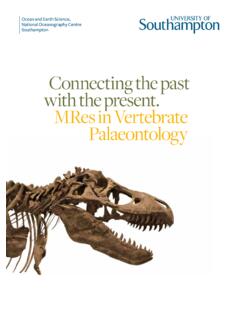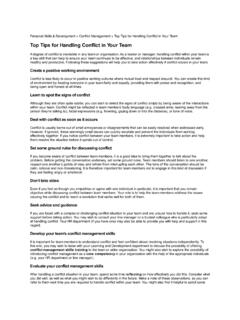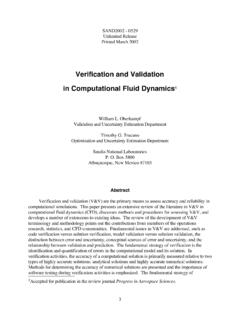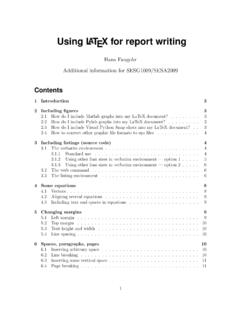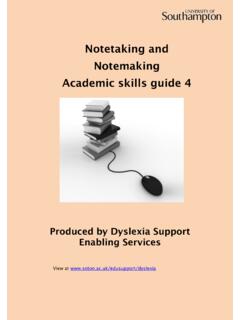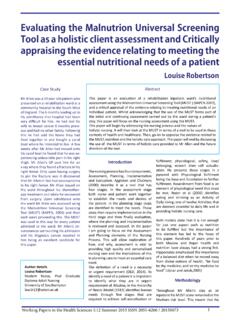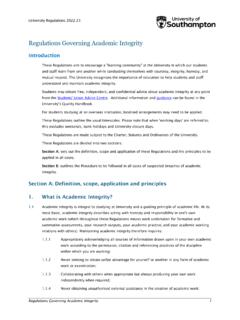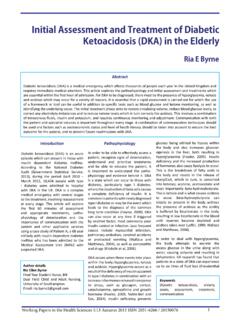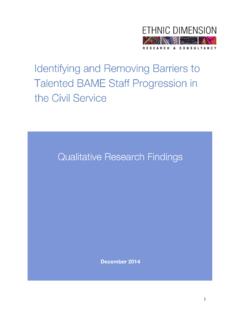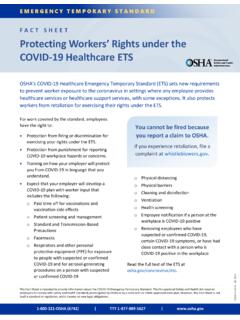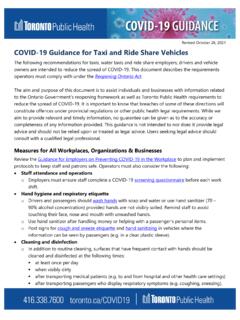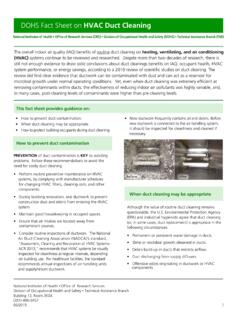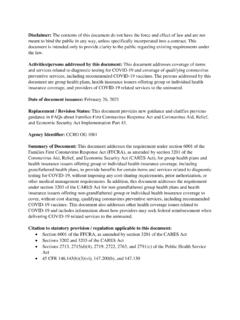Transcription of Barriers to Effective Communication
1 Personal Skills & Development Communication Skills Essentials of Interpersonal Communication Barriers toEffective CommunicationBarriers to Effective CommunicationRecognising the most common Communication Barriers and understanding how they impact on Effective Communication isvery important. removing Barriers is one of the easiest ways to improve Communication . This article briefly studies themajor obstacles to Communication . Each barrier will then be examined in turn in further articles, with tips on overcomingeach of the principal Barriers to Communication are:noise (interruptions, physical distractions)physical (geographical considerations, time and space)mental attitude (perceptions, stereotyping, prejudice, personal beliefs, status, relationship between communicators,culture, emotionality)poor feedbackpoor listening skillsselection of inappropriate medium or language usedbody language (non-verbal Communication )NoiseNoise is any interference that occurs between the communicators, the sender of the message, and the receiver.
2 Noiseappears in many forms it can be distractions due to pictures on the wall, or objects in the room. In written forms ofcommunication it can be the inclusion of irrelevant material, or an unsystematic approach to the topic. Other forms ofnoise can include: interruptions by other people, a ringing telephone, or external noise such as traffic outside a building,or people having a conversation close distractions are the physical things that can get in the way of the Communication process. A basic physicaldistraction can be the environment the room may be too hot or too cold, or chairs can be uncomfortable. A personsitting behind a desk or standing behind a lectern automatically creates a physical barrier between sender and and space also serve as Barriers to Effective Communication . When departments of an organisation aregeographically separate, quick, face-to-face Communication becomes much more difficult.
3 In global organisations, thetime difference between colleagues in other continents can be a key Communication attitudeThe attitude of both the sender and the receiver can act as an obstacle in the Communication process. Factors hereinclude: respect, culture, and assumptions based on personal bias or stereotyping. Lack of empathy between thecommunicators can create a barrier as this entails putting aside preconceptions and prejudices. The relationship betweenthe sender and the receiver is also important if the relationship is good, Communication automatically has a betterchance for success. Another key factor here is emotionality, if the speaker or the listener feels very strongly about acertain subject this will influence the Communication feedbackFeedback is the receiver sending back the message to the sender as they have perceived it.
4 It is reaction and withoutthis, it is impossible for the sender to know if the receiver has accepted and understood the message. It can occur in anumber of ways: people can be asked to repeat what they have said, or non-verbal Communication such as a frown or anod can provide valuable feedback to the sender. Feedback is especially important to help clarify muddled listening skillsListening skills can have a major impact on the effectiveness of Communication . A typical speaker will say about 125words per minute, while a listener can receive 400-600 words per minute. Therefore, about 75% of listening time is freetime, which can distract the listener. Barriers to Communication here include not paying attention or daydreaming, sosome or all of the message gets lost in the Communication of inappropriate medium or languageSelecting the correct channel for Communication is crucial, as using the wrong channel can hinder the communicationprocess.
5 In any situation, one medium may work better than another, although sometimes a combination of media will bethe most useful. Simple messages can usually be transmitted orally, while more complex messages should be transmittedorally and in language chosen is also vital to Effective Communication . Using exclusionary language such as jargon, slang andabbreviations can be a major obstacle in the Communication process. Similarly, the level of language used must bechosen carefully. The level of education and knowledge of the intended audience must be considered, as must theirsocial and cultural communicationAbout 55% of the meaning of a message is communicated through non-verbal interaction. This includes posture,gestures, facial expression, tone and pitch of voice, style of dress, eye gaze and proximity (personal space). However,non-verbal cues can be ambiguous and their meaning can vary with respect to culture, context and intention.
6 Randomgestures can be interpreted to have some significance when none was intended. Style of dress can also have a hugeinfluence on non-verbal Communication as this can affect people s perceptions and different types of Barriers to Effective Communication can all reinforce each other, leading to vicious cycles. Byanticipating potential Barriers and attempting to avoid them wherever possible, the impact of Communication can becomegreatly increased. Related ItemsRelated ResourcesOvercoming Barriers to Effective Communication : Noise and Physical BarriersOvercoming Barriers to Effective Communication : Mental Attitu

